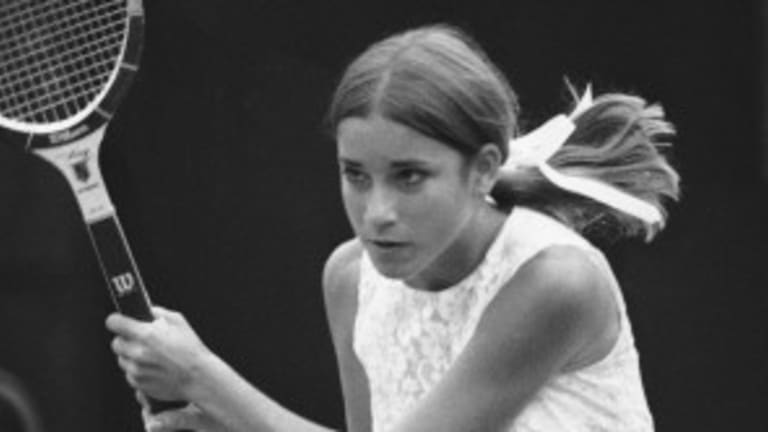This year marks the 50th anniversary of TENNIS Magazine's founding in 1965. To commemorate the occasion, we'll look back each Thursday at one of the 50 moments that have defined the last half-century in our sport.
In 1975, the New York Times ran an article entitled “If Bruce Springsteen Didn’t Exist, Rock Critics Would Have Had to Make Him Up.” The phrase may not have been easy to say, but the message wasn’t hard to understand: As a musical savior, the Boss was almost too good to be true.
Four years earlier at Forest Hills, something similar could have been penned by a sportswriter: “If Chris Evert Didn’t Exist, Tennis Would Have Had to Make Her Up.” That title was never used, to my knowledge, but it would have been a fitting description for what Chrissie—“the poker-faced 16-year-old ingenue with a two-fisted backhand and nothing to lose,” in the words of Sports Illustrated—did for the game, and in particular the American game, at the 1971 U.S. Open.
By the time Evert walked into the old concrete horseshoe stadium at the West Side Tennis Club—in her seven years at the event, she would never play anywhere else—the distant sound of a tennis boom had been heard across the U.S. for the better part of a decade. Through the affluent 60s, recreational interest had spread beyond the sport’s traditional club walls, and with the onset of the Open era in 1968, spectator interest began to catch up.
New fans tuned into see old legends like Rod Laver, who generated mass interest with his Grand Slam run in ’69, and Pancho Gonzalez, who proved to be a must-see star even into his 40s. But none of the game’s greatest players could match the appeal of the little blond teen with the big backhand, who was taking two weeks off from Ft. Lauderdale’s St. Thomas Aquinas High School. When the world watched “Chris America” coolly reduce her older opponents to tears on her way to the semifinals, usually with a dramatic comeback thrown in for good measure, the boom was on. SI summed her performance up this way: ‘She seldom showed emotion and she looked so young. The crowd went wild.”
In rain-soaked New York, Chrissie was a flash of late-summer lightning; or, as Bud Collins put it, she “swooshed into the Forest Hills stadium like a Florida hurricane.” But while she was just 16 and little more than a rookie, Evert wasn’t exactly a nobody. She came into the event having won 25 straight matches. And with several top players sidelined—Margaret Court was pregnant and couldn’t play; Virginia Wade was injured; Evonne Goolagong hadn’t made the trip from Australia—she wasn’t that much of a long shot, either.
Evert began with a win over Edda Buding—“I was petrified,” Evert said, but she didn’t look it, as she left the German with eyes less than dry. But Chrissie didn’t take hold as a phenomenon until her second-round win over Mary Ann Eisel, which was broadcast on CBS. Evert’s winning scores were 4-6, 7-6, 6-1, but they hardly tell the whole story of that match. The legend of “The Little Ice Woman” was born when she held off six match points with Eisel serving at 6-5 in the second set. You can hear that legend being born in the voice of Collins in the clip below; when Evert puts a backhand pass in the corner to break serve for 6-6, he yells, “Chrissie GOES FOR THE CORNER AND GETS IT.”
